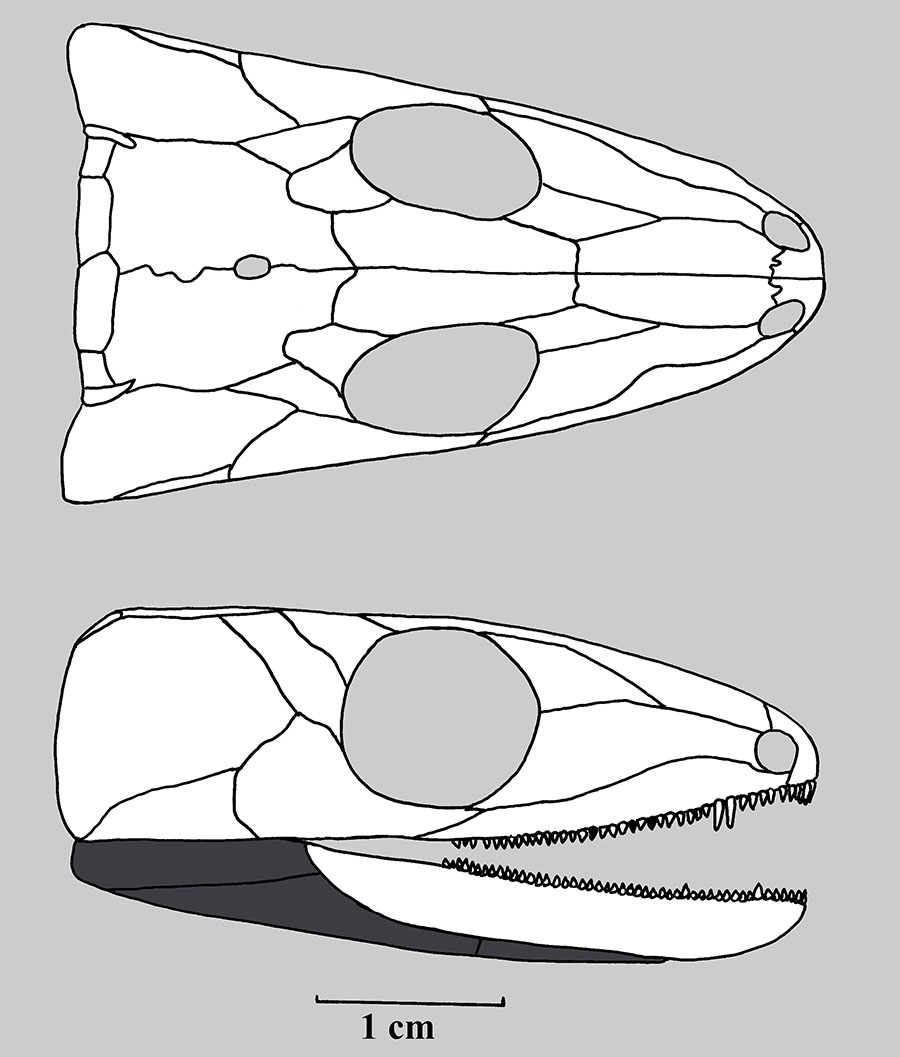
Species: lyelli DAWSON, 1860
Etymology: In honor of Dawson's teacher, the geologist Sir Charles Lyell.
Holotype: BMNH R 4168
Locality: Joggins, Cumberland County, Nova Scotia Province, Canada.
Horizon: Joggins Formation, coal group 26, section XII, division 4.
Biostratigraphy:
Age: Westphalian A, Lower Westphalian, Lower Upper Silesian stage, upper Bashkirian – lower Moscovian Epoch, Middle Pennsylvanian (Late Middle Carboniferous).
Material: Almost complete skeleton.

Skull after Carroll, 1964.

Skeleton, after Carroll, 1964.
Referred material:
BMNH R 4167: Vertebrae, pelvis, femur, phalanges, ribs and scales.
NMC 10048: Vertebral column, pelvic girdle, both hind limbs and feet.
NMC 10047: Pterygoid, stapes, vertebrae, ribs, pelvic girdle, femora and scales.
NMC 10046: Vertebrae, pelvis, femora, fibula, humerus, ribs, scales and phalanges.
RM 12207: Palate, squamosal, dentary, articular, angular, coronoid, vertebrae, jugal, tibia and phalanges.
RM 12016a. Most of skull roof, pterygoids, dentary, vertebrae, ribs and clavicle.
FMNH PR 875: Cast of type.
= Hylerpeton curtidentatum DAWSON, 1876
Etymology:
= Fritschia curtidentata DAWSON, 1888Holotype: RM 2.1126
Locality: Joggins, Cumberland County, Nova Scotia Province, Canada.
Horizon: Joggins Formation, coal group 26, section XII, division 4.
Biostratigraphy:
Age: Westphalian A, Lower Westphalian, Lower Upper Silesian stage, upper Bashkirian – lower Moscovian Epoch, Middle Pennsylvanian (Late Middle Carboniferous).
Material: Maxilla, premaxillae, lower jaws, humerus, femur, ribs, phalanges and scales.